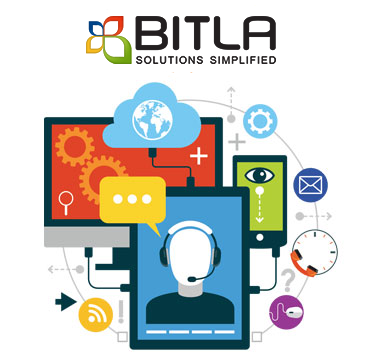Bitla API Integration
 We are really connected to the world with each other like never before. A single touch, magnetize the things. How does it happen?. How the signal flies from one touch to the receiver and back to us as a solution?. The messenger behind the procedure is “Application Programming Interface”. Application Programming Interface is all about connectivity. API is a technology that manages two internet-connected services.
We are really connected to the world with each other like never before. A single touch, magnetize the things. How does it happen?. How the signal flies from one touch to the receiver and back to us as a solution?. The messenger behind the procedure is “Application Programming Interface”. Application Programming Interface is all about connectivity. API is a technology that manages two internet-connected services.
To be more precise about the concept in detail, Lets starts with an analogy of a “delivery boy”
Imagine that you have decided to order food from online and you have started searching for the favourite resto and the menu, finally you found one & placed the order. Now you are waiting for the delivery boy. Here the API is “delivery boy”. The delivery boy gets the notification of your order and receives the order from the restaurant then delivers you at the door. From this, it is understanding that a critical link is needed to receive your request, to get connected with the system and to deliver its response back to you. This critical link is said to be API.
To integrate Bitla's API into your application, you can follow the following steps:
- Understand the API: Review the Bitla API documentation to understand its capabilities and limitations. Pay particular attention to the API's endpoints, parameters, and authentication requirements.
- Register for an API key: To access Bitla's API, you'll need to register for an API key. Follow the authentication process outlined in the API documentation to obtain your API key.
- Choose a programming language and library: Depending on your application's programming language and framework, you may need to use a specific library or package to make API calls. Consult the Bitla API documentation to determine the appropriate method for making requests to the API.
- Integrate the API into your application: Use the chosen programming language and library to integrate the Bitla API into your application. Make sure to follow the API documentation's guidelines on how to format requests and handle responses.
- Test the API integration: Verify that the API is working correctly in your application by testing its functionality with various input parameters. Be sure to handle any errors or exceptions that may occur.
- Optimize and scale the API integration: Once you've confirmed that the API is working correctly, you can optimize and scale the integration by incorporating caching, load balancing, and other performance-enhancing techniques.
If you encounter any issues while integrating Bitla's API, refer to the API documentation or reach out to Bitla's support team for assistance.
















